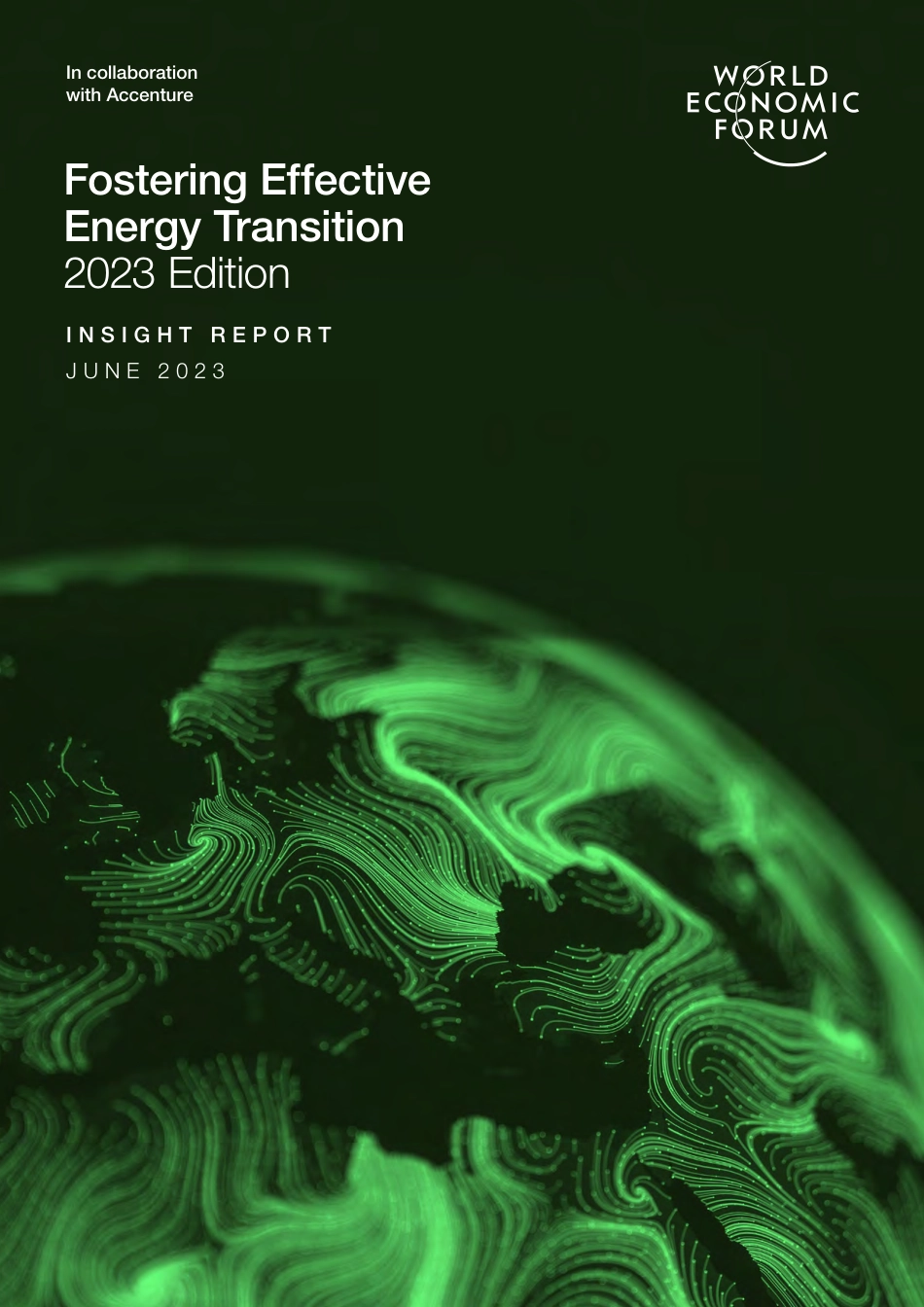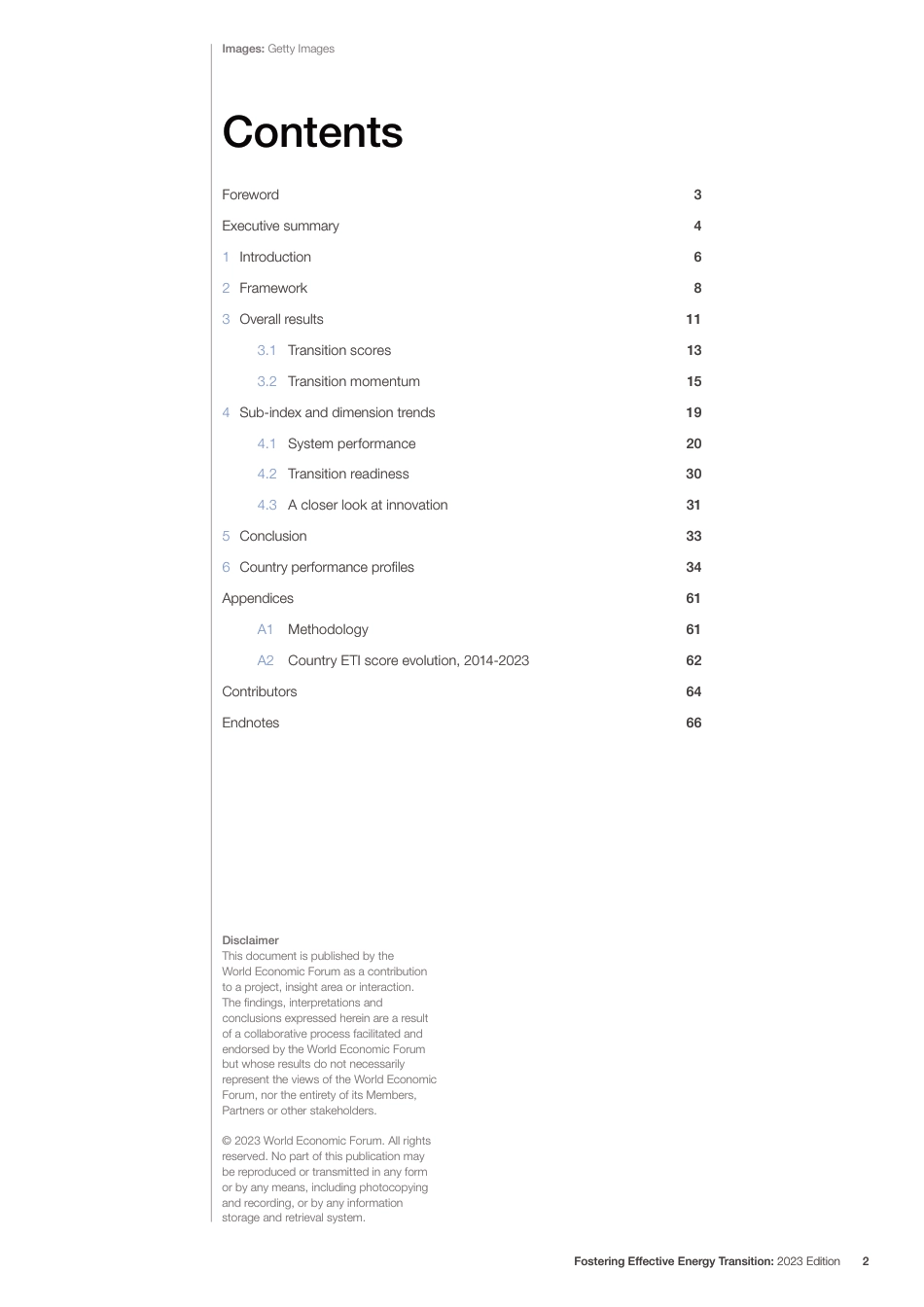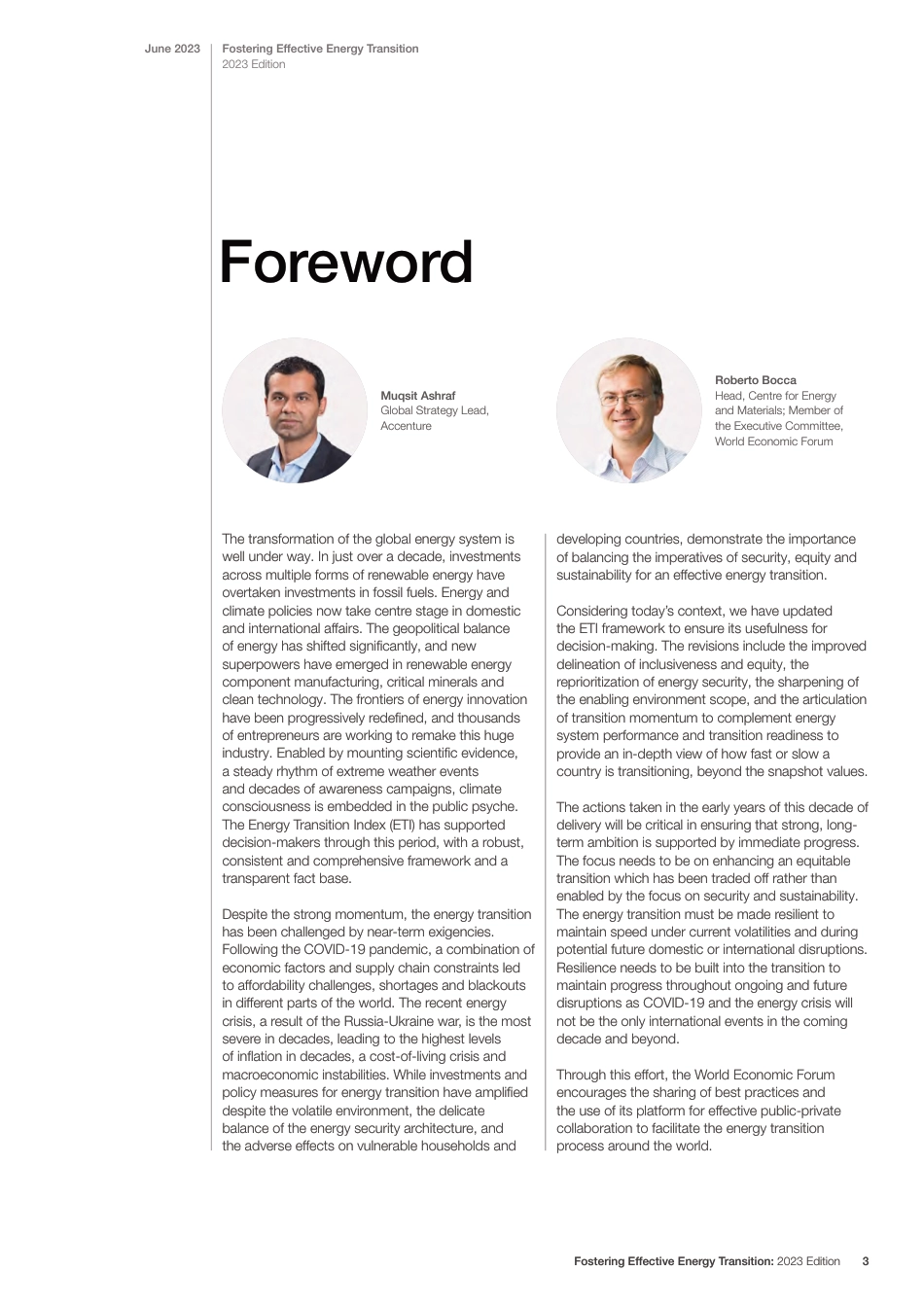Fostering Effective Energy Transition 2023 EditionI N S I G H T R E P O R TJ U N E 2 0 2 3In collaboration with AccentureImages: Getty Images© 2023 World Economic Forum. All rights reserved. No part of this publication may be reproduced or transmitted in any form or by any means, including photocopying and recording, or by any information storage and retrieval system.Disclaimer This document is published by the World Economic Forum as a contribution to a project, insight area or interaction. The findings, interpretations and conclusions expressed herein are a result of a collaborative process facilitated and endorsed by the World Economic Forum but whose results do not necessarily represent the views of the World Economic Forum, nor the entirety of its Members, Partners or other stakeholders.ContentsForeword 3Executive summary 41 Introduction 62 Framework 83 Overall results 113.1 Transition scores 133.2 Transition momentum 154 Sub-index and dimension trends 194.1 System performance 204.2 Transition readiness 304.3 A closer look at innovation 315 Conclusion 336 Country performance profiles 34Appendices 61A1 Methodology 61A2 Country ETI score evolution, 2014-2023 62Contributors 64Endnotes 66Fostering Effective Energy Transition: 2023 Edition2ForewordThe transformation of the global energy system is well under way. In just over a decade, investments across multiple forms of renewable energy have overtaken investments in fossil fuels. Energy and climate policies now take centre stage in domestic and international affairs. The geopolitical balance of energy has shifted significantly, and new superpowers have emerged in renewable energy component manufacturing, critical minerals and clean technology. The frontiers of en...



